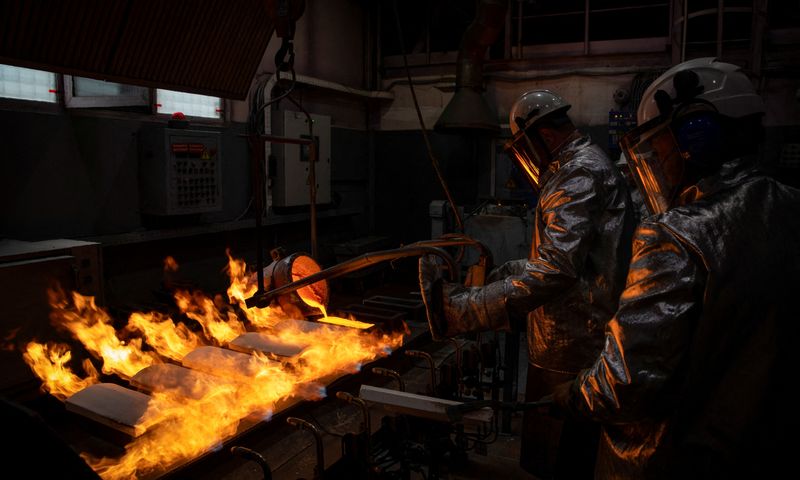Commodities
Gold breaks $2,600 barrier as Fed cut bets prolong historic run

By Anushree Mukherjee
(Reuters) – Gold soared above the $2,600 level on Friday for the first time, extending a rally boosted by bets for further U.S. interest rate cuts, and rising tensions in the Middle East.
was up 1.3% at $2,620.63 per ounce by 1:43 p.m. ET (1743 GMT), while U.S. settled 1.2% higher to $2,646.20.
Bullion’s latest rally got a fillip after the Federal Reserve initiated an aggressive easing cycle on Wednesday with a half-percentage-point reduction, adding to the appeal for gold, which pays no interest.
Prices of the safe-haven asset have climbed 27% in 2024, their biggest annual rise since 2010, as investors also sought to hedge uncertainties spurred by prolonged conflicts in the Middle East and elsewhere.
The record rally could be poised for a correction, analysts said.
“Clearly, there’s still some buying activity associated with the Fed’s decision to begin their easing cycle with a big cut,” said Daniel Ghali, commodity strategist at TD Securities.
However, “the source of this buying activity remains off our radar,” given ETF inflows are relatively marginal and Asian buyers are still on a buyers’ strike, all signs of “extreme positioning,” Ghali added. [GOL/ETF]
The record rally has eroded retail demand in top consumers China and India. [GOL/AS]
The rally in gold “should not go on forever,” Commerzbank (ETR:) said in a note, citing the expectation for rate cuts of only 25 basis points each at the Fed’s next two meetings.
Still, some analysts said gold could see more upward spikes.
“Geopolitical risks, such as ongoing conflicts in Gaza, Ukraine, and elsewhere, will ensure to sustain gold’s safe-haven demand,” Forex.com analyst Fawad Razaqzada said in a note.

Continued weakness in the dollar, which makes gold cheaper for holders of other currencies, offered additional tailwinds, analysts said. [USD/]
Elsewhere, spot silver gained 1.2% to $31.16. Platinum fell 1.1% to $978.50 and palladium shed 0.5% to $1,074.84.
Commodities
Oil prices rise; U.S. crude inventories plunge, Russia-Ukraine truce eyed
Commodities
India’s Reliance to stop buying Venezuelan oil over US tariffs, sources say
Commodities
Oil prices climb on Venezuela supply worries

 Forex3 years ago
Forex3 years agoForex Today: the dollar is gaining strength amid gloomy sentiment at the start of the Fed’s week

 Forex3 years ago
Forex3 years agoUnbiased review of Pocket Option broker

 Forex3 years ago
Forex3 years agoDollar to pound sterling exchange rate today: Pound plummeted to its lowest since 1985

 Forex3 years ago
Forex3 years agoHow is the Australian dollar doing today?

 Cryptocurrency3 years ago
Cryptocurrency3 years agoWhat happened in the crypto market – current events today

 World3 years ago
World3 years agoWhy are modern video games an art form?

 Commodities3 years ago
Commodities3 years agoCopper continues to fall in price on expectations of lower demand in China

 Economy3 years ago
Economy3 years agoCrude oil tankers double in price due to EU anti-Russian sanctions























